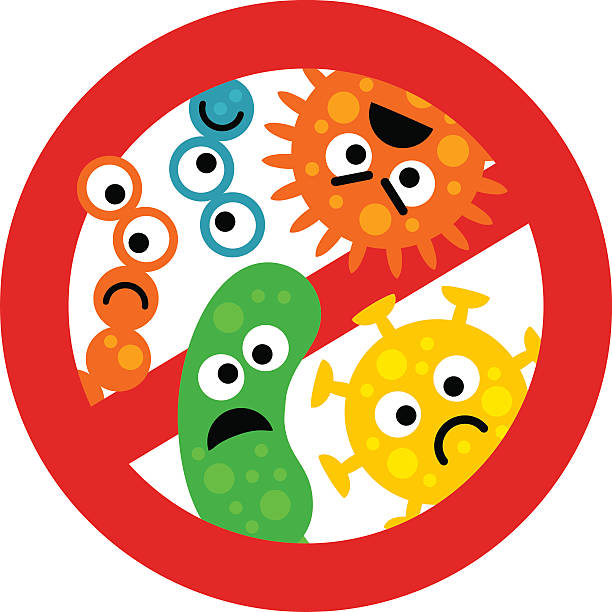Information
-
Document No.
-
Audit Title
-
Client / Site
-
Conducted on
-
Prepared by
-
Location
-
Personnel
I. Cleaning and Disinfecting
-
The pharmacy and areas where medications are stored, compounded, dispensed, prepared,<br>and administered are clean?
-
Staff uses organization–approved cleaning procedures and cleaning and disinfecting<br>agents?
-
There are an adequate number of sinks and sufficient space and materials for cleaning<br>equipment and washing hands?
-
Alcohol-based hand rub containers are appropriately located?
-
Cleaning agents and supplies are available to staff?
-
Cleaning and disinfecting agents are appropriately diluted?
-
Cleaning and disinfecting agents are appropriately labeled?
-
Equipment is kept clean and stored in a clean area? (Note: Areas under sinks are not clean areas. Mortars, pestles, glassware, and<br>other equipment that must be kept clean must be stored in a clean area)
-
Drug preparation, packaging, and dispensing devices (e.g., mortars, pestles, pill crushers, pill splitters, counting trays, graduated cylinders, unit-dose packaging devices,<br>and balances) are cleaned after each use and disinfected if necessary?
-
Devices used for crushing or splitting tablets are cleaned immediately after use according to manufacturers’ recommendations and instructions?
-
Medication carts, drawers, and bins containing individual patient’s medications are kept clean?
-
Automated dispensing cabinets and bins are cleaned according to the manufacturer’s recommendations and instructions?
II. Boxes and Storage
-
Cardboard boxes are stored off the floor?
-
Shipping containers are not stored or opened (i.e., torn or cut) in any area reserved for prepackaging medications or compounding sterile preparations? (Note: Handling and storing shipping containers (e.g., cardboard boxes) must be done with minimal air disturbances and dissemination of dust particles. Intravenous (IV) bags and bottles and related supplies must be removed from cartons and wiped with an approved disinfecting agent prior to placing them in the sterile preparation area)
III. Waste
-
Staff disposes of waste in accordance with the organization’s infection control policies and procedures?
-
Waste disposal containers are close to the area of use?
-
Noninfectious waste is not mixed with infectious waste?
IV. Infectious Waste
-
Staff disposes of infectious waste in accordance with the organization’s infection control policies and procedures?
-
Infectious waste disposal containers are close to the area of use?
-
Infectious waste is placed in specially marked containers (e.g., red bags) and disposed of separately from routine trash?
-
Items used in patient rooms are not returned to the pharmacy?
V. Attire
-
Personnel wear appropriate attire in non-sterile areas?
-
Attire worn in the sterile compounding area is clean and minimizes the potential for shedding and contamination, and meets the organization’s policy and state regulations?
-
Personnel remove jewelry and cosmetics prior to compounding sterile preparations?
VI. Hygiene
-
Personnel with rashes, sunburn, weeping sores, conjunctivitis, or active respiratory infection do not prepare sterile preparations?
-
Fingernail length complies with the organization’s policies and procedures?
-
The use of artificial fingernails complies with the organization’s policies and procedures?
-
Routine hand washing is performed at the beginning of the shift, after visiting the restroom, before and after eating, and when the hands are obviously soiled? (The<br>areas under the fingernails must be kept clean.)
-
Staff uses a hand washing technique and cleaning agent that are approved by the organization?
VII. Sterile Preparation Compounding
-
Personnel wash their hands thoroughly prior to compounding sterile preparations?
-
Personnel who leave the sterile preparations compounding area rewash their hands prior to resuming compounding?
-
Areas for compounding sterile preparations minimize opportunities for particulate and microbial contamination of the preparations?
-
Floors in the ante and buffer areas are cleaned in accordance with USP <797> requirements?
-
All compounded sterile preparations are labeled with beyond-use dates?
-
Compounded sterile preparations are quarantined and inspected by a pharmacist prior to release from the pharmacy? (When possible, the individual who performs the inspection should not be the individual who compounded the preparation)
VIII. Primary Engineering Controls (PEC)
-
Sterile preparations are compounded in a properly maintained laminar airflow workbench, biological safety cabinet, compounding aseptic isolator, or compounding<br>aseptic containment isolator?
-
Compounding of medium- and high-risk preparations, parenteral nutrition, antineoplastic and other hazardous agents, cardioplegia, and other preparations that require<br>specialized knowledge or equipment usually found only in the pharmacy are compounded in the pharmacy by specially trained staff?
-
Primary engineering control surfaces are cleaned and disinfected frequently, including at the beginning of each work shift, before each batch preparation is started, every 30 minutes during continuous compounding activity, when spills occur, and whenever surface contamination is known or suspected?
-
USP Purified Water is used to remove water-soluble residues, and then the same surfaces are disinfected with a non-residue generating agent using a lint-free wipe? (Note: Most organizations use sterile 70% isopropyl alcohol as the disinfectant. Other agents may be used if approved by the organization)
-
All items (including syringes, vials, and other extraneous items) are removed from the hood before cleaning it? (Note: Infection-control policies and procedures should include a schedule and technique (including cleaning agent) for cleaning primary engineering controls (laminar air flow workbenches, biological safety cabinets, compounding aseptic<br>isolators, and compounding aseptic containment isolators). Clean the work surface, side panels, and other accessible surfaces, starting at the top and rear and working downward and toward the front, unless the manufacturer recommends a different procedure.)
-
Routine maintenance, such as cleaning or replacing prefilters, is performed regularly and according to manufacturers’ specifications (e.g., monthly or quarterly)?
-
HEPA filters are replaced or repaired when recommended by a qualified certifier?
-
Environmental monitoring of both non-viable (e.g., particles) and viable (e.g., microbial or fungal contamination) is performed as required (e.g., by USP <797> and/or state regulations)?
-
Results of environmental monitoring are reported to the organization? (Infection Control Committee)
-
Primary engineering controls are checked and certified when they are first placed in service, at least every 6 months, when maintenance is completed, or they are moved<br>to a new location? (Note: Certification of primary engineering controls is usually documented by placing a sticker on the device and keeping inspection records on file.)
-
Checks of operational efficiency of all primary engineering controls, ante areas, and buffer areas are performed at least once every 6 months by a qualified certifier?
IX. Aseptic Technique
-
A sterile syringe is used for each medication withdrawn?
-
Syringes are used on one patient only and then disposed of properly?
-
A sterile needle is used for each medication withdrawn?
-
Containers for disposal of used needles and other sharp objects are available, used properly, and not overfilled?
X. Single-Use Containers
-
Single-use containers are not reused?
-
Single-use containers are discarded immediately after use in accordance with the organization’s policies?
XI. Multiple-Dose Containers
-
Multiple-dose containers that will be reused after the first puncture are labeled with an appropriate beyond-use date? (Note: All multiple-dose containers intended for reuse must be labeled with a beyond-use date whether they are labeled with the date of the first entry or not.)
-
Multiple-dose containers are not used beyond the time specified by the organization’s policies? (The time period must not exceed 28 days unless a longer time period is specifically referenced in the package insert for the product. Whatever the policy, the period must not conflict with the manufacturer’s recommendations nor extend beyond the manufacturer’s expiration date.)
-
Pharmacy bulk packages of electrolytes and other products are used in the pharmacy for no more than 4 hours after the initial entry into the container unless the manufacturers’ product information provides for another time period? Any unused portions are discarded.
XII. Additional Comments or Findings
-
Any additional comments or findings to report?
-
Surveyor signature









